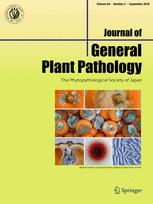Streptomyces spp. are a highly diverse group of bacteria most of which are soil-inhabiting saprophytes. A few are plant pathogens that produce a family of phytotoxins called thaxtomins and cause significant economic losses, e.g., by reducing the marketability of potato tubers (Solanum tuberosum). In northern Europe, S. scabies, S. turgidiscabies and S. europaeiscabiei are the most common plant pathogenic species. In this study, a Streptomyces strain isolated from a netted scab lesion on a tuber of potato cv. Bintje in northern Sweden was identified as S. turgidiscabies but was found to differ in the genomic region carrying genes required for thaxtomin biosynthesis. Our results showed that the strain did not produce thaxtomin but rather phytotoxin fridamycin E, which is an anthraquinone novel to plant pathogenic Streptomyces spp. Fridamycin E was shown to reduce or inhibit sprouting of potato microtubers in vitro. While fridamycin E is known to have antibiotic activity against Gram-positive bacteria, the inhibitory activity of fridamycin E on plant growth is a novel finding.
Phytotoxin produced by the netted scab pathogen, Streptomyces turgidiscabies strain 65, isolated in Sweden
Citation: Natsume, M.; Nagagata, A.; Aittamaa, M.; Okaniwa, N.; Somervuo, P.; Fiedler, H.P.; Kreuze, J.F.; Rokka, V.M.; Bang, H.; Kawaide, H.; Valkonen, J.P.T. 2018. Phytotoxin produced by the netted scab pathogen, Streptomyces turgidiscabies strain 65, isolated in Sweden. Journal of General Plant Pathology. ISSN 1345-2630. 84:2. 108–117.
2018-10-17
POTATO AGRI-FOOD SYSTEMS, POTATOES
Europe
Sweden
journal_article

